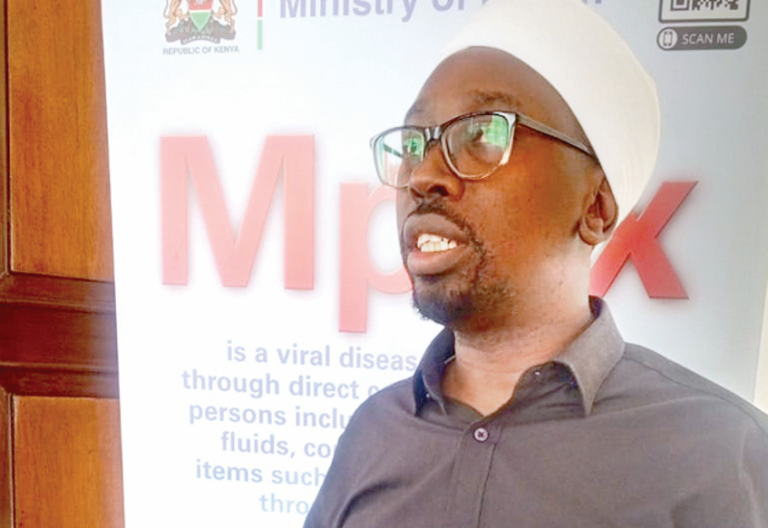Nakuru records the highest number of Mpox infections

Nakuru town, the country’s youngest city, is becoming the epicentre of the Mpox virus, if the numbers the Ministry of Health released last week are anything to go by.
Out of the total 36 cases reported from across 12 counties since the outbreak of the disease in July, 10 have so far been detected in Nakuru, followed by Mombasa which has eight.
Public Health PS Mary Muthoni said last week, the ministry has ranked Busia third after Nakuru and Mombasa with three cases overall.
“Other counties reporting cases are Nairobi, Kajiado, Bungoma, Taita Taveta, Kericho and Kilifi with two cases each, as well as one case each from Makueni, Kiambu and Uasin Gishu, respectively,” she said.
She also revealed that in terms of preparedness and response, the ministry has put in place a robust surveillance system to quickly identify potential cases. This, she said, includes close monitoring of travellers, especially those coming from countries where there is an active outbreak.
There is also the provision of timely information to healthcare providers and the general public across the country.
“The ministry has taken proactive steps in coordination with key stakeholders, including the World Health Organisation, UNICEF and other partners, to ensure that we have the necessary capacity to respond,” she said, noting this is on top of public awareness campaigns through community engagements with key populations.
However, according to the long-distance drivers, these efforts might not achieve the desired outcomes if this key population’s potential is not properly utilised, in the face of yet another threat from the Marburg Virus, now ravaging parts of Tanzania.
Every single night, slightly over 3,000 drivers out of a total of 5,000 who cross the border between Kenya and Uganda and into the East African hinterland, switch off their trailers, park and sleep in the City of Nakuru and its outskirts.
This group has been described as one of the high-risk populations when it comes to infections and transmission.
Elijah Nyaga, the chairperson, Long Distance Drivers and Conductors Association (LDDCA) argues that for effective response it is imperative to involve the stakeholders. The association is advocating for partnership on sensitisation, training, and capacity building.
“This will enhance the reduction of Mpox because we don’t have that capacity to do the sensitisation to all truck drivers but with the partnership with the ministry it becomes much easier,” he said.
Nyaga revealed that on a daily basis about 1,000 to 5,000 truck drivers cross the East African borders, exposing them to unique challenges in access to healthcare.
“One of our suggestions is that the Ministry of Health should provide mobile clinics and points where we can disseminate information about Mpox to our members and the drivers’ fraternity at large,” he said, regretting that since the outbreak of the disease last July, drivers have never been involved in the sensitisation campaign despite their position.
Transit town
This he regretted, was the same situation when the Covid-19 pandemic struck. He also noted that Nakuru happens to be a hotspot for some of these trans-boundary infectious diseases because it’s a transit town. “If you’re going to any country within East and Central Africa apart from Tanzania, you have to pass through Nakuru from Mombasa and from Nairobi. Be it a passenger, bus driver or truck driver, the town a transit centre and it’s a major one,” he said.
Nyaga noted that considering the numbers that cross both borders; Busia and Malaba on a daily basis through Nakuru, it could be around 3,000 to 5,000 drivers in a night spending in the town. So far, the government, through the National Public Health Lab, has screened 386 samples since Mpox outbreak, which have come from 38 counties.
Out of this number, 36 have been confirmed positive with 348 turning out to be negative.









